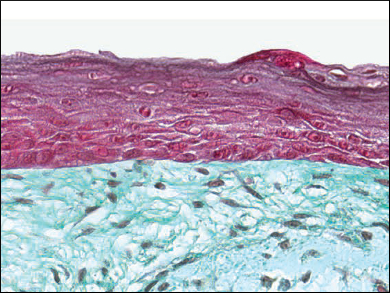Tissue engineering can help doctors to grow custom organs in the lab in order to help their patients. Human skin, in particular, can be grown on scaffolds and transplanted. However, these approaches are time-consuming and not well suited for complex three-dimensional structures.
Christophe A. Marquette, Université Lyon, France, and colleagues have developed a 3D bioprinting process which can produce viable dermis (the second layer of skin) without a scaffold in a matter of minutes. The process also allows the production of intricate shapes. The team prepared a specially-formulated bio-ink containing gelatin, alginate, and fibrinogen in addition to the skin cells. After 3D printing, the dermis samples were seeded with epidermis cells and cultured for several days to prepare fully functional skin (pictured).
To show the technique’s suitability for complex shapes, the team printed dermis in the shape of a human ear. According to the researchers, the speed and spatial control of the developed bioprinting approach are significant advantages compared to established skin tissue engineering methods.
- Human Skin 3D Bioprinting Using Scaffold-Free Approach,
Léa J. Pourchet, Amélie Thepot, Marion Albouy, Edwin J. Courtial, Aurélie Boher, Loïc J. Blum, Christophe A. Marquette,
Adv. Healthcare Mater. 2016.
DOI: 10.1002/adhm.201601101



